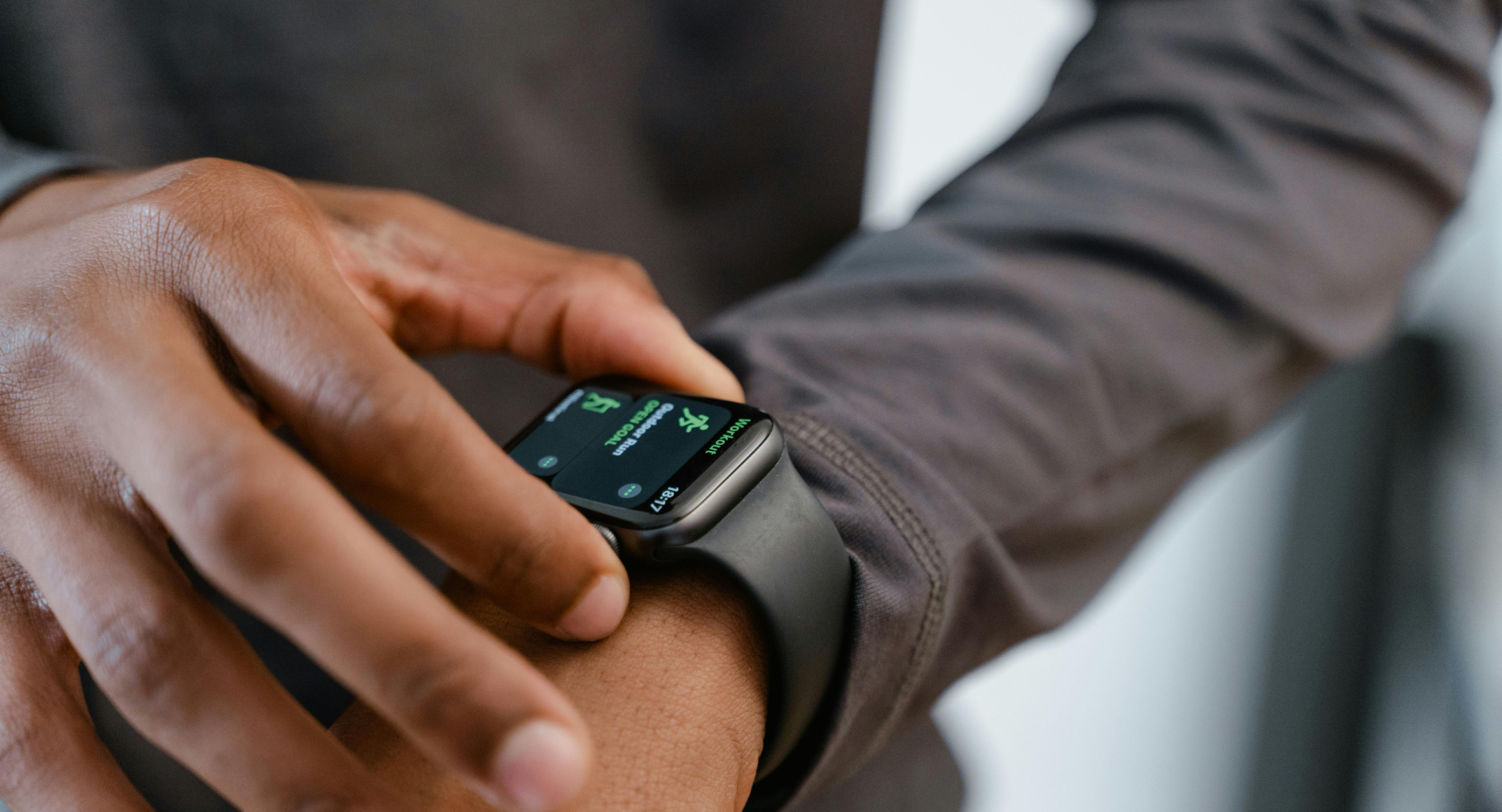Key Takeaways
- HealthTech helps individuals manage their health through digital solutions like telemedicine, wearables, and health apps, while MedTech provides healthcare professionals with specialized equipment for diagnosis and treatment.
- HealthTech is consumer-focused and aims to make healthcare more accessible, while MedTech is used primarily by medical professionals to improve patient outcomes.
- Healthcare technology has seen rapid growth since 2020, driven by the COVID-19 pandemic, with global health innovation funding increasing from $1.2 billion in 2010 to $44 billion in 2021.
- The integration of health and technology is enabling more personalized medical services instead of a one-size-fits-all approach.
- Technology integration in healthcare helps reduce development time and time to market while improving patient care outcomes through better access to information and diagnostics.
Is Your HealthTech Product Built for Success in Digital Health?
.avif)
Since 2020, healthcare technology has rapidly evolved, driven by the COVID-19 pandemic. As a result, HealthTech and MedTech innovations have transformed how we manage health, diagnose diseases, and provide patient care. With more people than ever relying on digital healthcare solutions, technology has become a crucial partner in making healthcare more accessible and effective. But what exactly do HealthTech and MedTech mean? How do they differ, and when should we use them? Let’s explore.
What is HealthTech?
HealthTech (Healthcare Technology) refers to digital solutions that empower individuals to take control of their health.
Imagine talking to your doctor through a video call on an app or using mobile devices to track your heart rate. HealthTech includes health apps, telemedicine (online doctor appointments), and wearable tech that make medical services more accessible. This makes it easier to track health monitoring and improve patient care.
These solutions also bridge the gap between healthcare providers and consumers, making medical support more proactive, preventative, and personalized.
What is MedTech?
MedTech (Medical Technology) focuses on advancing patient diagnostics, treatment, and medical procedures through specialized equipment and medical devices.
Unlike HealthTech, which is consumer-focused, MedTech is primarily used by healthcare professionals to improve patient outcomes.This can include medical devices that take detailed pictures of the inside of your body, robots that assist in surgery, or devices that can monitor your blood sugar levels.
MedTech is more about enabling doctors, surgeons, and specialists to perform life-saving procedures with greater accuracy, efficiency, and safety.
.avif)
Key differences between HealthTech and MedTech
The main difference between HealthTech and MedTech is that HealthTech gives you tools to manage your health, while MedTech gives tools to medical professionals to diagnose and treat you.
HealthTech is like having a friendly assistant that helps you manage your health using your phone or computer. It lets you talk to doctors online, keep track of your exercises, and even remind you to take your medicine on time. It’s all about using digital healthcare technology to make your health more accessible and convenient.
On the other hand, MedTech is like the extensive toolkit that doctors, nurses, and other medical professionals use to figure out what’s wrong when you’re not feeling well and to help fix it. It includes all the wearables, gadgets, and tools they use to check your body, like the scanners that take pictures of your insides or the robots that help do surgery with great precision. MedTech helps medical professionals do their jobs better and provide better care when you’re sick or injured.
Popular HealthTech solutions
Examples of HealthTech products include:
- Fitbit: A wearable device for tracking physical activity and health.
- Headspace: A mobile app offering guided meditation.
- InnGen: A platform simplifying the medical research and testing process.
Fitbit
Fitbit, a leading wearable device, monitors daily physical activities like steps, heart rate, and sleep patterns, epitomizing mobile health and digital wellness. Its app helps users track progress, set fitness goals, and provides personalized insights to improve health. Although Fitbit launched its first tracker in 2008, the company was founded in 2007.
Headspace
Headspace is a mobile application providing guided meditation and mindfulness exercises. It’s designed to help users reduce stress, improve sleep, and promote overall mental well-being. Launched in 2010, Headspace has been at the forefront of making meditation and mindfulness practices more accessible to people around the globe.
InnGen
InnGen is one of our clients, a notable entity in the healthcare industry, offering a web-based solution crafted to streamline the medical research and testing process for administrators and individuals. The core of InnGen’s service is a digital platform where users can effortlessly purchase medical tests. The platform is designed to simplify the ordering process and enhance overall customer service while ensuring a smooth workflow for administrators and laboratories involved.
.avif)
Leading MedTech innovations
Notable examples of MedTech products include:
- Intuitive's da Vinci Surgical System: A robotic system enhancing precision in minimally invasive surgery.
- Philips’ Ingenia MRI: An MRI system offering superior imaging quality and patient comfort.
- Dexcom G6 Continuous Glucose Monitoring System: A device for real-time glucose monitoring without fingersticks.
Intuitive Surgical’s da Vinci Surgical System
The da Vinci Surgical System, developed by Intuitive Surgical, is a robotic surgical system designed to facilitate complex surgeries with a minimally invasive approach. It allows surgeons to perform delicate and precise movements through small incisions with enhanced vision, precision, and control. Since its launch in 2000, it has revolutionized certain surgeries, making procedures less invasive and recovery times shorter for patients.
Philips’ Ingenia MRI
Philips’ Ingenia MRI system provides high-quality magnetic resonance imaging (MRI) with better patient comfort and faster exam times. Launched in 2011, this MRI system uses digital technology to deliver precise and detailed images, crucial for accurate diagnosis and treatment planning. It focuses on improving the patient experience while ensuring the utmost precision in imaging.
Dexcom G6 Continuous Glucose Monitoring System
The Dexcom G6 is a continuous glucose monitoring system that allows individuals with diabetes to monitor their glucose levels in real-time without needing fingersticks. Launched in 2018, this system includes a small, wearable sensor and transmitter that sends glucose data to a smart device or Dexcom receiver every five minutes. The real-time alerts and trend data help individuals manage diabetes more effectively, providing valuable insights and peace of mind.
.avif)
The importance of Healthcare technology integration
Understanding the significance of merging health with technology is more crucial now than ever. As the global health challenges mount, leveraging health apps and medical devices becomes an imperative pathway toward solutions. While the realms of MedTech and HealthTech have blossomed with innovative solutions in recent times, their journey reflects an evolutionary process responding to the world’s health demands.
In recent years, particularly in 2020, digital health has witnessed a surge in investments, signaling a recognition of its pivotal role. According to StartUp Health’s 2022 annual insights, in 2010, global health innovation funding was a modest $1.2 billion, which soared to $7.2 billion by 2014, marking a six-fold increase. As the years progressed, 2021 saw an unprecedented $44 billion in global health innovation, propelling the sector into exuberance.
Now, more than ever, the healthcare industry remains an expansive field for entrepreneurs and investors, echoing the persistent essence of technology in advancing healthcare, reflecting not just a market trend but a global necessity.
Thanks to technological solutions like electronic health and data analytics applied to healthcare, clinicians gain enhanced access to information and diagnostics, significantly improving patient care outcomes. From a broader perspective, this can condense the development time and reduce the time to market. It also increases the level of personalized medical services instead of a one-size-fits-all model. Development and investment in that industry are significant.
Momentum: Your partner in HealthTech innovation
At Momentum, we help HealthTech startups, scaleups, and medical providers bring their life-changing ideas to reality. Whether it's developing secure, HIPAA-compliant telemedicine platforms, designing AI-powered diagnostics, or integrating wearables with existing healthcare systems, we ensure technology works for real people, making a real impact.
If you’re looking to build the future of healthcare, let’s talk.
Frequently Asked Questions
HealthTech refers to digital health solutions like mobile health apps, telemedicine platforms, remote patient monitoring systems, and AI-powered healthcare software. MedTech typically covers medical devices such as diagnostic equipment, surgical instruments, and implantable technologies. While MedTech focuses on physical devices used in clinical settings, HealthTech prioritizes digital products that improve healthcare delivery, access, and patient engagement.
No, HealthTech and MedTech are related but distinct. HealthTech focuses on software-driven healthcare innovations like mobile apps, telehealth platforms, and AI-based decision support. MedTech focuses on hardware-based medical devices. They sometimes overlap, especially when medical devices integrate digital health features, but HealthTech is not a subset of MedTech.
Momentum specializes in custom HealthTech app development, helping healthcare companies build compliant, scalable, and user-centered digital health products. From AI-powered telemedicine solutions to secure remote patient monitoring systems, Momentum guides HealthTech startups and healthcare organizations through the entire product lifecycle, from idea validation to launch and scale.
Yes, Momentum partners with MedTech companies to develop software that complements medical devices, such as companion mobile apps, remote monitoring dashboards, and integration layers for electronic health records (EHR). We ensure these solutions meet healthcare compliance standards like HIPAA, GDPR, and MDR.
Understanding the difference helps define regulatory pathways, product strategies, and user needs. HealthTech apps typically follow digital health regulations and patient data privacy laws, while MedTech devices often require medical device certifications (like CE marking or FDA approval). Partnering with a digital health agency like Momentum ensures the right development approach for each.
In HealthTech, AI supports clinical decision-making, patient engagement, diagnostics, and operational efficiency. In MedTech, AI enhances medical imaging, device performance, and real-time monitoring. Momentum helps teams develop AI-powered healthcare applications that integrate seamlessly with HealthTech platforms or MedTech devices while meeting stringent healthcare regulations.
No, telemedicine platforms are classified as HealthTech solutions. They are digital tools that enable remote consultations and patient care, typically delivered via web or mobile apps. Momentum specializes in building secure, intuitive telemedicine platforms that improve access to healthcare services.
User-centered design is essential in both fields but is often a key differentiator in HealthTech. HealthTech focuses heavily on patient engagement, accessibility, and intuitive app experiences, which is where Momentum excels. In MedTech, usability is critical but often centers around healthcare professionals and device handling.
Startups should look for a digital health agency experienced in building compliant, scalable, and user-centered healthcare apps. Momentum brings deep HealthTech expertise, helping startups navigate the challenges of regulatory compliance, product-market fit, and AI implementation in healthcare.
Yes, hybrid solutions like FDA-cleared wearable devices are combining consumer-focused HealthTech with MedTech-grade clinical accuracy.
In 2025, HealthTech trends include AI-powered remote patient monitoring, consumer wellness apps, and telemedicine platforms. MedTech is advancing in areas like robotic surgery and diagnostic imaging technologies.















.png)




